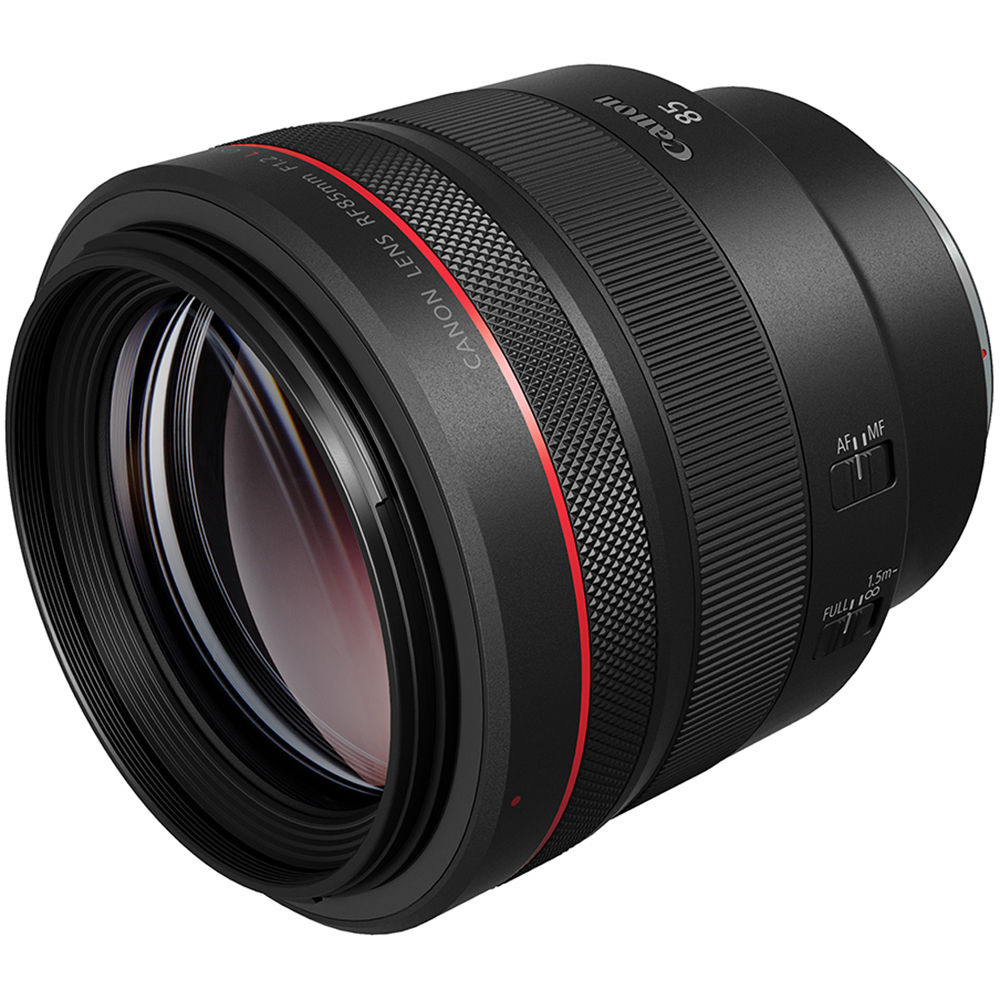We’ve reached the limits of physics, but not of imagination. The next great leap in photography will come from computation, not optics.
The Plateau of Hardware Progress
For decades, the progress of photography was measured in hardware milestones. Bigger sensors delivered cleaner files, faster apertures gave us creamier backgrounds, and sharper optics raised the ceiling of what was technically possible. These were milestones you could see and feel, often with immediate results. Every upgrade was another step closer to perfection. But by 2025, perfection is largely here. Most modern lenses are razor-sharp across the frame. Most modern sensors offer more dynamic range than many photographers know what to do with. The physics of glass and silicon are running out of headroom.
 That doesn’t mean engineers have stopped. Exotic optics like the Canon RF 85mm f/1.2L USM, the Nikon Z 58mm f/0.95 Noct, or Sigma’s 135mm f/1.4 DG DN Art show that physics can still be bent. But these halo lenses cost thousands and rarely change the shooting experience for most people. A new lens that’s marginally sharper than the last is impressive but not transformative.
That doesn’t mean engineers have stopped. Exotic optics like the Canon RF 85mm f/1.2L USM, the Nikon Z 58mm f/0.95 Noct, or Sigma’s 135mm f/1.4 DG DN Art show that physics can still be bent. But these halo lenses cost thousands and rarely change the shooting experience for most people. A new lens that’s marginally sharper than the last is impressive but not transformative.
What is transformative are the moments when technology unlocks new creative experiences. A lens can make an image cleaner, but computation can make an image possible in the first place. And that difference is where the future lies.
The Silent Revolution Already Underway
Computational photography is already embedded in many “serious” cameras. OM System pioneered features like Live Composite and Live ND, available in the OM System OM-1, letting photographers simulate long exposures without glass filters and giving them the ability to stitch dozens of frames live. That is more than a time saver. It’s a new way of seeing.
Fujifilm has taken another path. Film simulations in cameras like the X100VI have become iconic. They aren’t gimmicks but deliberate translations of color science that turn otherwise sterile sensors into expressive palettes. A generation of photographers has grown up identifying not with “Fujifilm sensors” but with Provia, Velvia, and Classic Chrome, computational choices that feel every bit as real as film once did.
Even post-production has been transformed. Adobe Lightroom’s Denoise AI can recover files at ISO 12,800 that would have been unusable just a few years ago. Topaz Photo AI pushes this further, applying sharpening, noise reduction, and upscaling in ways that make aging files feel like they were shot yesterday. Computation doesn’t just save images; it redefines what images are possible.
And then there are the quirks unique to certain brands. Pentax’s AstroTracer, available in cameras like the K-3 Mark III, uses sensor-shift stabilization paired with GPS to track stars across the sky. Suddenly, astrophotography becomes accessible to those who don’t own expensive equatorial mounts. Panasonic’s Depth from Defocus autofocus system leans heavily on algorithms rather than pure phase-detect hardware. Even Sony’s Real-Time Tracking autofocus is, at its core, computational, analyzing shape, pattern, and color data to follow subjects.
Smartphones as the Blueprint
The most powerful example is already in your pocket. Apple, Google, and Samsung didn’t win with physics; their phones will always have tiny sensors and simple optics. Instead, they doubled down on computation. Apple’s Smart HDR merges frames seamlessly to preserve skies and shadows. Google’s Night Sight stacks multiple exposures to produce clear, colorful images from near-darkness. Samsung’s computational zoom blends data from multiple cameras to simulate telephoto reach that would otherwise be impossible in such a small device.
These features aren’t curiosities; they’ve redefined expectations. Consumers don’t just accept computational tricks; they rely on them. A smartphone that can brighten a candlelit dinner table or capture a clean handheld photo of the Milky Way feels magical. And once people experience that, their tolerance for “serious” cameras that can’t do the same thing diminishes. A $1,200 phone that produces usable nightscapes challenges the value proposition of a $3,000 camera that requires tripods and editing to achieve a result that looks the same at social media resolutions.
This is why computation is not a side note. It is, or will be, the main story. Phones have proven that computation can stand in for physics, and in many cases, deliver results that feel even more impressive to average users. The camera industry should see this as a lesson, not a threat.
The Industry’s Stubbornness
Despite this, the traditional camera industry clings to its old playbook. Sony releases the a7R V, Canon offers the EOS R5, Nikon refines the Z9. Each delivers faster autofocus, better sensors, or incremental refinements. But these aren’t revolutions. They’re polish. They serve enthusiasts and professionals but fail to inspire the wider culture. In fairness, there is some progress with things like AI-powered autofocus, but the pace is slow.
The contrast is striking. The tools are excellent, but the experience feels outdated. Consumers notice. If phones deliver magic and cameras deliver chores, even the best optics will struggle to hold cultural ground. This isn’t about dismissing hardware. It’s about broadening the definition of progress. Cameras that continue to treat computation as an afterthought risk becoming irrelevant to all but the most technical specialists.
Why Purism Is a Myth
One of the biggest obstacles to change is cultural. Photography has long wrapped itself in the idea of purity. Real photographers, the myth goes, work with light, not algorithms. Computation is cheating. But this has never held water. Autofocus is computation. Image stabilization is computation. Even the raw file is an algorithmic interpretation of sensor data. Every era of photography has been a negotiation between physics and processing.
History makes this obvious. Autofocus was mocked when it arrived in the 1980s; professionals swore it would never replace manual skill. Image stabilization was unnecessary, people said, because real photographers used tripods. Now, both are not only accepted but expected. Computation will follow the same path. What feels like cheating today will become tomorrow’s baseline expectation. The myth of purity is just nostalgia in disguise.
Unlocking Creativity at the Point of Capture
The most exciting thing about computation is that it expands creativity at the moment of capture. With traditional hardware, many ideas required complex workflows or expensive accessories. Now, they can happen instantly. Pentax’s AstroTracer turns a simple DSLR into a star-tracking machine. OM System’s Live ND lets you blur waterfalls handheld without filters. In-camera focus stacking, available in the Nikon Z9, creates macro images with impossible depth of field directly in-camera.
These tools are about more than convenience. They change the rhythm of shooting. Inspiration is fragile. The idea that pops into your head while standing on a cliff or wandering a city street might vanish if it has to wait until post-processing. Computational tools let you explore those ideas immediately. Instead of recording a scene and hoping to shape it later, you collaborate with the camera in real time. That’s a profound shift in how photographers interact with their tools.
Democratization Through Code
Computation is also a cultural equalizer. Physics has always favored those with money. A fast prime like the Sigma 35mm f/1.2 DG DN Art costs over a thousand dollars. Medium format sensors are still out of reach for most people. Computational techniques, however, give everyone a taste of those effects. AI bokeh simulates shallow depth of field. Multi-frame stacking cleans up noise. Computational sharpening rescues files shot in challenging light.
This doesn’t make hardware irrelevant. But it levels the playing field. The difference between the best gear and average gear shrinks when computation is part of the workflow. That broadens access and brings more people into the creative fold. Photography becomes less about owning the sharpest lens and more about using tools imaginatively. That democratization has always been what keeps mediums alive.
Conclusion: A Hybrid Future
The danger for traditional camera makers is not extinction but irrelevance. Smartphones have already set mainstream expectations. People want polished results immediately. They don’t want to bracket exposures or clean up noise manually. They want their devices to deliver images that look good now. If Canon, Nikon, and Sony ignore this shift, they will remain excellent tools for specialists but lose the cultural conversation.
Once that happens, it’s hard to reverse. A generation raised on iPhones that can shoot handheld nightscapes won’t flock back to cameras that demand tripods and hours of editing. Cultural irrelevance is harder to fix than technical shortcomings. The industry risks being remembered not as the leader of photography’s future but as the caretaker of its past.
The future of photography isn’t about abandoning optics. Glass and sensors will always matter; they are the foundation of image quality. But computation is the new frontier. Cameras that fuse robust optics with computational creativity will define the next decade. A lens may deliver sharpness, but computation delivers possibilities.
Photography has always advanced when it became more accessible and imaginative. Roll film made cameras portable. Digital sensors made them limitless. Computational photography is the next chapter, one that will make cameras not just sharper, but smarter, and not just technical, but cultural. The brands that embrace this shift will thrive. Those that don’t will fade. One way or another, the future of photography won’t just be written in glass. It will be written in code.

